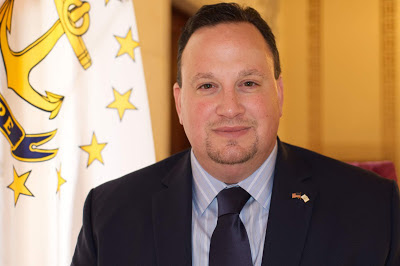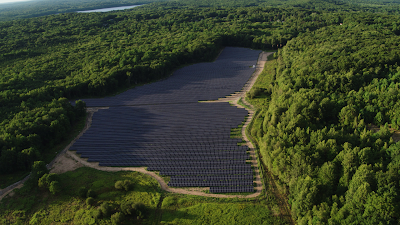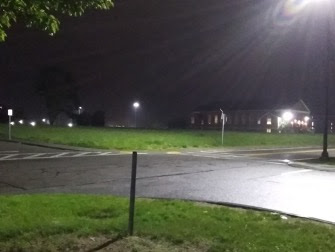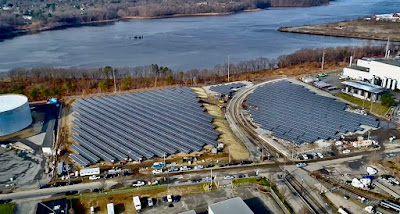From the Desk of the Commissioner July 2020

Racial equity is now on the forefront of our national conversation, compelling all of us to examine implicit biases, as well as our institutions, as we seek to create a more inclusive community. During this turbulent time, we are following Governor Gina Raimondo’s leadership and as she implements “RIse Together,” a new vision for a more equitable and resilient Rhode Island, created in coordination with community and youth leaders as a first step to combat racial inequities in our state.
At OER, we affirm that all Rhode Islanders should have access to clean, affordable, and reliable energy, including frontline and environmental justice communities. OER is committed to integrating energy justice into its work by examining our programs, initiatives, and policies to advance equity across the energy sector; educating our staff on equity and justice principles; and improving our public participation processes to make them more accessible to (and inclusive of) marginalized communities and communities of color.
Improving equity will require stakeholders from all communities to bring their voices, their perspectives, and their concerns to the table so that we may better address them with impactful solutions. We look forward to having you as our partners in this effort so we can move – together – towards a more just energy future.
The challenges facing our communities are many. COVID-19 remains a serious health concern for all Rhode Islanders and we are hopeful that infections continue their downward trend as Phase 3 of the Governor’s Reopening RI plan advances (www.reopeningri.com). Governor Raimondo and Dr. Alexander-Scott continue to stress public vigilance – for instance, mask-wearing, social distancing, sanitation and screening remain vital to stopping the spread of COVID-19. We are not out of the woods yet and this virus will continue to present challenges for Rhode Islanders, as well as our state’s clean energy sector. In the coming weeks, let us all re-commit to do our part in following public health guidelines and protecting our family, friends, and neighbors.
COVID-19’s impact on energy affordability has been profound. We understand that many Rhode Islanders are continuing to struggle to pay their utility bills during the pandemic and businesses are facing a host of financial and operational challenges as they reopen. If you are looking for assistance, we invite you to visit our new webpage at www.energy.ri.gov/COVID-19, where we have assembled a series of resources to help you navigate these trying times.
One of the most important things you can do to reduce your energy costs and help the environment is to implement cost-effective energy efficiency measures in your residence or business. National Grid is now conducting FREE, virtual home energy assessments via mobile device. A home energy audit allows customers to discover ways they can save energy and reduce their bills – in this case, without even requiring a home visit. This will help keep both customers and vendors safe until site visits can resume. After your home energy audit is complete, you will be provided with a plan of action to help you save energy and lower your bills.
More information may be found at: www.nationalgridus.com/RI-Home/Energy-Saving-Programs/Home-Checkups-Wea….
Rhode Island’s energy efficiency contractors are also receiving training on how to conduct installations safely under COVID-19. If you are a contractor who wishes to receive this training, visit National Grid’s website and review the protocols posted at Environmental Health & Engineering.
Making the switch to solar power is another potential way to decrease your energy bills. I am proud to announce the launch of Rhode Island’s Community Solar Marketplace website at risolarmarketplace.com, which provides information about the benefits of community solar and offers a single place for visitors to preview the growing list of community solar projects in development and subscribe to them. Community solar allows nearly all Rhode Islanders – including those who cannot install solar on their rooftops, renters, and condo owners – to enjoy the benefits and lower costs of locally generated solar power, while shrinking their carbon footprint and supporting local clean energy jobs. This new marketplace offers an online location for Rhode Islanders to shop a variety of community projects, as well as to connect with developers for more information.
During the pandemic we have maintained our focus on charting a course to a 100% renewable electricity future. We recently announced the first in a series of virtual public workshops in response to Governor Raimondo’s Executive Order 20-01: Advancing a 100% Renewable Energy Future for Rhode Island by 2030. The first virtual workshop was held July 9 via Zoom. During this first Public Workshop, OER introduced the State Project Team and its consultants; discussed some initial principles to help guide the work ahead; talked through proposed analytical approaches; and – most importantly – began a dialogue with and received input from the community to enhance the project and its outcomes. The meeting materials may be downloaded from our “100% by 2030” webpage at www.energy.ri.gov/100percent. If you would like to be added to our list for the next workshop tentatively planned for September, please email energy.resources@energy.ri.gov.
Incredibly, we are halfway through 2020 and, while we still have turbulence ahead of us, I continue to be optimistic about our future. Rhode Islanders have proven, repeatedly, that they can weather the toughest challenges and emerge stronger. We will do so again.
I wish you and your family much happiness and safety this summer.
Sincerely,
Nick









